
What do we know about smart contracts? At present, blockchain technology can be found in various industries, from banking and insurance to real estate and healthcare. Smart contracts are an integral part of blockchain and are a must for blockchain-based solutions to operate efficiently. Reliable smart contracts simplify transactions between identified and anonymous parties.
Most companies adopt smart contracts to reduce the costs and formality associated with traditional approaches while maintaining authenticity and credibility. They also help eliminate human errors and unreliable paperwork.
These self-executing contracts are particularly valuable in use cases like asset tokenization, supply chain management, and decentralized finance (DeFi).
Smart contracts are deployed using smart contract platforms. However, you need to choose a platform that best fits your business case. But how do you find the best smart contract platform? Let’s find out.

Smart contracts are digital agreements between two entities that are executed on a blockchain network. In other words, smart contracts are stored on a public database and remain immutable once executed. Because smart contracts run on decentralized blockchains rather than a centralized server, they allow entities to reach a shared result in an accurate, timely, and secure manner.
Each contract has a set of predefined conditions. When these conditions are met, the contract is automatically executed and the following events are triggered. An executed contract is a signed contract that initiates a contractual relationship between two or more entities. Once the smart contract is signed, each party commits to upholding the responsibilities they agreed to in the written form.
Smart contracts are typically used to automate the execution of an agreement so that all involved parties can secure the result as soon as possible without time delays and third parties. This smart contract capability is what enables trustless collaboration in decentralized applications (dApps).
Speed, Efficiency, and Accuracy
Once the predefined conditions are met, the smart contract executes itself immediately. Because smart contracts are digital and automated, there is no need to deal with a lot of unreliable paperwork. As a result, there is no time wasted correcting human errors that occur when documents are filled out manually. The transaction speed is significantly higher than traditional processes.
Trust and Transparency
No third party is involved, and encrypted records of transactions are shared among network participants. So you never have to worry about data being altered for personal gain because the parties to the smart contract monitor all transactions.
Security
Blockchain transaction records are extremely difficult to hack because they are encrypted. Each record on a distributed ledger is linked to those before and after it, so cyber criminals would have to adjust the entire chain to change a single record. Additionally, running on a decentralized blockchain means there is no centralized intermediary to corrupt and no mechanism to tamper with the results.
Savings
Smart contracts eliminate the need for intermediaries to process transactions and the associated fees and time delays. This directly helps reduce transaction fees, which is vital in the context of DeFi protocols and applications.
The idea behind smart contracts is simple. They are just digital “if/when-then” agreements between at least two entities with the security encoding of the blockchain. There is no limit to how many IF/WHEN and THEN can be included in a smart contract. Once deployed, the smart contract gets an address in the blockchain that is used to interact with the contract and perform actions.
Here are some steps to follow when working with smart contracts.
Step 1: Identifying agreement. Multiple entities identify the opportunity for collaboration and discuss the expected outcomes. These agreements can include business processes, asset exchanges, and more.
Step 2: Setting conditions. Smart contracts can be executed by the entities themselves or when certain triggering conditions are met. For example, they can be payment authorizations, shipment delivery, etc.
Step 3: Coding business logic. At this point, smart contract developers write computer programs that will self-execute when the predefined conditions are met.
Step 4: Using blockchain and encryption. Encryption enables secure authentication and message transfer between entities associated with the smart contract.
Step 5: Execution and processing. In blockchain iteration, the code is executed each time the entities reach a consensus on authentication and verification. The results are then recorded for further compliance and verification.
Step 6: Network updates. When the smart contract is executed, all network participants, or nodes, update the distributed ledger to reflect the new terms. The record cannot be changed when it is broadcast and verified on the blockchain network. Thus, the record is only in append mode.
Smart contracts often operate on multiple blockchains and interact across networks to achieve broader interoperability. With the rise of decentralized apps and different blockchain ecosystems, this cross-chain compatibility becomes crucial.
The most popular smart contract platform is Ethereum, as it is considered to provide significant benefits to its users. Built on the Ethereum blockchain, it supports a wide variety of decentralized applications and is fully compatible with the Ethereum Virtual Machine (EVM), which is crucial for developers.
However, there are other smart contract platforms that can be used for commercial application development. When choosing a smart contract platform, you should focus on the future use case.
Currently, smart contracts are in great demand as the adoption of Web3 technologies increases. Various industries, such as construction, healthcare, logistics, etc., are looking for faster and more secure solutions.

We have created a list of the top smart contract platforms that you can use to streamline your business processes and transactions with other entities. Let’s take a closer look at them.

Ethereum is the world’s first smart contract platform and remains the most popular among developers. It uses the proof-of-stake (PoS) consensus mechanism to achieve the speed of 100,000 transactions per second, reduce environmental damage, and lower transaction fees. Since its launch in 2015, more than 44 million smart contracts have been deployed on Ethereum.
The platform is widely used in the DeFi space and other industries. JP Morgan, Walmart, Meta, and Amazon are among the Fortune 500 companies using Web3 technologies.
Benefits
Drawbacks
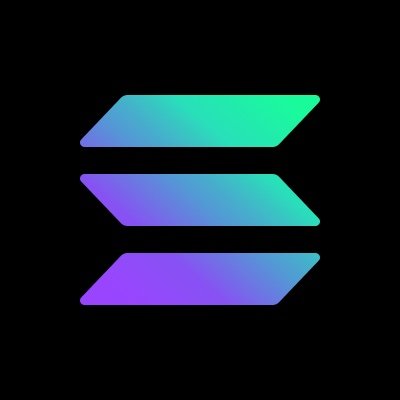
Solana is a high-performance, fast, and scalable network. It was built in 2017 by top software engineers from Dropbox, Intel, and Qualcomm. The platform uses the proof-of-stake and proof-of-history (PoH) consensus algorithms to enable parallel transaction processing and increase the performance of the network. As a result, Solana processes approximately 65,000 transactions per second. The platform also offers low transaction fees of only $0.00025.
More than 500 dApps and other projects are built on Solana, including the music streaming service Audius, the sci-fi fantasy game Star Atlas, and the decentralized oracle network Chainlink.
Benefits
Drawbacks

Avalanche is a blockchain developed by Ava Labs and released in 2020. It is one of the most popular blockchain networks because it helps solve the blockchain trilemma of decentralization, scalability, and security. Avalanche uses the proof-of-stake consensus mechanism. The network is capable of processing 4,500 transactions per second and charges $0.000000583 per transaction at today’s prices.
Avalanche has a three-chain subnet architecture that includes the C-chain (contract chain), P-chain (platform chain), and X-chain (exchange chain). The subnets are compatible with any virtual machine and smart contract package, giving developers flexibility and control over their applications.
The Avalanche ecosystem includes more than 150 projects and dApps, mostly from the decentralized finance industry. For example, Deloitte is using Avalanche to enhance its cloud-based Close As You Go platform.
Benefits
Drawbacks

Algorand is a smart contract platform launched in 2019. It uses the Pure Proof-of-Stake (PPoS) consensus algorithm and is capable of processing 6,000 transactions per second for $0.00021 per transaction. The Algorand network is popular with asset issuers and asset management platforms.
The PPoS consensus ensures the highest possible level of security and allows any user to be selected as a validator with an equal degree of probability. Algorand has its own smart contract execution environment called Algorand Virtual Machine (AVM).
There are around 700 projects on the Algorand blockchain, including Algofi (decentralized exchange), Tinyman (lending), and Yieldly (yield).
Benefits
Drawbacks
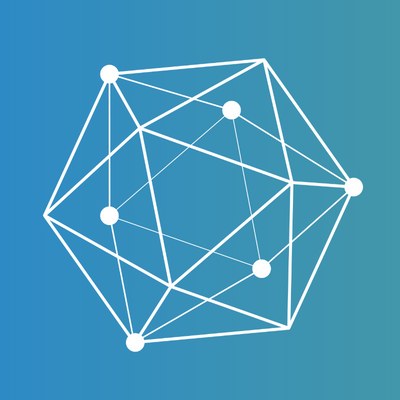
Hyperledger Fabric is an enterprise-grade smart contract platform founded by the Linux Foundation in 2015. The platform is capable of processing 20,000 transactions per second with zero transaction fees. Hyperledger Fabric is a permissioned blockchain, meaning that only authorized participants can enter transaction records. The platform is used by giants such as Amazon, Hitachi, and Walmart.
Hyperledger Fabric uses the Crash Fault Tolerant (CFT) consensus mechanism, which can withstand system failures. The platform offers a wide range of development tools that simplify the creation and deployment of smart contracts. Smart contracts can be written in Go and JavaScript.
Benefits
Drawbacks

Polkadot is not a smart contract platform by nature, it’s an ecosystem that unites individual blockchains under one network. It was developed by Gavin Wood, co-founder of Ethereum and creator of Solidity, and launched in 2020. The Polkadot blockchain network was developed by the software development company Parity Technologies. Polkadot is capable of processing 1,000 transactions per second.
Polkadot has parachains that are connected to the Relay Chain, which is responsible for network interoperability of parachains and parathreads. These parachains support smart contracts and can interact with each other. The Moonbeam parachain was introduced to enable smart contract functionality and allow developers to create natively interoperable dApps. To ensure transparency in the network, Polkadot uses the Nominated Proof-of-Stake (NPoS) consensus algorithm.
There are many projects running on Polkadot, including Robonomics (IoT), Polkastarter (DEX), and Kilt Protocol (digital identity).
Benefits
Drawbacks
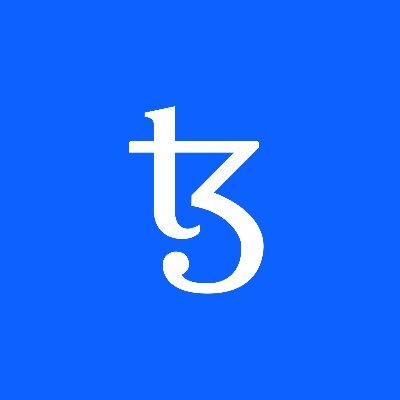
Tezos is a smart contract platform launched in 2017 by Arthur Breitman. The platform runs on a proof-of-stake consensus algorithm to achieve distributed consensus and consumes far less energy than proof-of-work blockchains Tezos is capable of processing 1,000,000 transactions per second. Smart contracts can be written in Michelson, the native language of Tezos.
Tezos was designed as a blockchain that would handle protocol forks. Forks occur when a group of nodes do not follow the vision of a blockchain and decide to leave. To avoid hard forks, Tezos uses on-chain administration. Simply put, developers can propose changes to the protocol and implement them immediately if stakeholders agree.
McLaren Racing, Manchester United, and Red Bull Racing are among the global brands that have chosen Tezos as their blockchain.
Benefits
Drawbacks

Corda is an open-source smart contract platform developed by the R3 Consortium. The platform is focused on enterprise-grade applications, enabling companies to reduce costs by streamlining processes and automating secure transactions. Corda is capable of processing 20,000 transactions per second.
The platform provides a private and secure environment for executing smart contracts, ensuring that only authorized parties can access the terms of the contract. Corda smart contracts can be written in Java and Kotlin, making them easy to understand and use.
The platform uses a transaction-based data model and Raft as the consensus algorithm. Raft is a crash-fault-tolerant (CFT) ordering service that allows the algorithm to reach consensus even if one of the components fails.
Benefits
Drawbacks

Stellar is an open-source blockchain platform founded in 2014 by Jed McCaleb, one of the founders of Ripple. The platform enables the creation and deployment of smart contracts. It is capable of processing 4,000 transactions per second.
Stellar is one of the cryptocurrency smart contracts that offer security, scalability, and cost efficiency. The platform doesn’t have its own smart contract language, so they can be written in any of the most popular programming languages. Stellar has strong partnerships with well-known companies such as IBM, Coinbase, and MoneyGram.
Benefits
Drawbacks

EOS is a blockchain network powered by EOSIO open-source software. The EOSIO platform offers several advantages, including cloud storage, server hosting, and user authentication. EOS is capable of processing 4,000 transactions per second. The platform operates on its consensus method called Delegated Proof-of-Stake (DPoS).
EOS is coupled with the Agile system. It also uses C++ to create smart contracts and WebAssembly (WASM) as a virtual machine to execute smart contracts, making the platform developer friendly. Ubuntu Energy Ledger, a clean energy marketplace, is built on the EOS platform.
Benefits
Drawbacks

Waves is a smart contract platform released in 2016. It is an open-source platform that aims to address many of the existing issues that are holding back more mainstream blockchain implementations, namely scalability and speed. The platform is capable of processing 100 transactions per second.
Waves is an easy-to-use platform that provides developers with all the necessary tools and APIs to build and launch their applications. Similar to Ripple, the platform has positioned itself as a foundation to facilitate token operations. What’s more, Waves is an excellent platform for ICOs. The Waves platform has worked with Burger King Russia and signed a strategic partnership agreement with Deloitte.
Benefits
Drawbacks

Tron is one of the largest blockchain-based platforms using distributed ledger technology. The platform aims to reduce the need for centralized channels as a way to conduct online transactions. Tron is designed to provide a system that focuses on decentralization and democratization.
This is achieved by using protocols and tools that work without the need for additional permissions. The platform’s smart contracts can be written in the Solidity programming language, making them fully compatible with Ethereum.
Tron is capable of processing 2,000 transactions per second. It uses the proof-of-stake consensus mechanism. Some examples of projects built on Tron are JustSwap (DEX), Wink (casino), and Kraftly (an NFT marketplace).
Benefits
Drawbacks
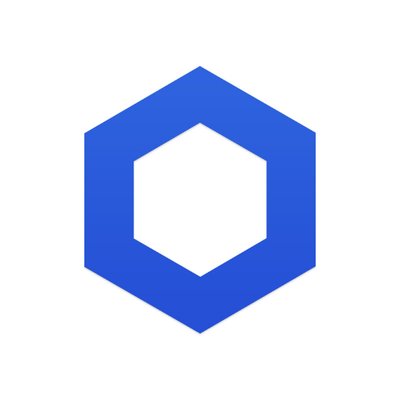
Chainlink is a blockchain-based decentralized oracle network launched in 2017. Oracles are entities that act as intermediaries, connecting blockchains to external systems. In addition, oracles allow smart contracts to be executed based on inputs and outputs coming from the blockchain. Although traditional oracles are centralized, Chainlink decentralizes the process of moving data on and off blockchains using “hybrid smart contracts.”
Chainlink partners with large enterprises, decentralized platforms, and startups. For example, SWIFT and the Web3 Foundation use the Chainlink network.
Benefits
Drawbacks
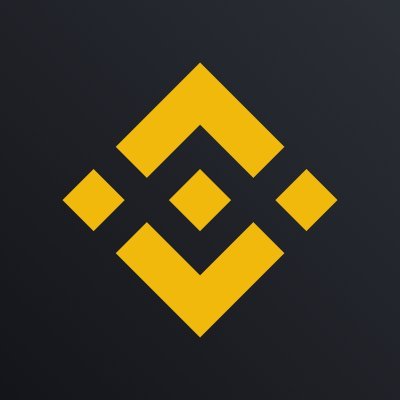
BNB Chain is a multi-chain network that was launched in 2020. It consists of BNB Beacon Chain (formerly Binance Chain) and BNB Smart Chain (BSC), which enables the creation of smart contracts and EVM-compatible Web3 applications. BinanceCoin is capable of processing 2,200 transactions per second. It uses the proof-of-stake consensus algorithm.
The BNB Chain supports a large number of tokens across multiple ecosystems through its Binance Bridge. This reduces the amount of work developers have to do to integrate the use of other tokens into their applications. In addition, the chain provides a powerful library of data indices, explorers, and wallets to simplify the product development process. There are also dedicated resources and tools to help bring dApps into the BNB ecosystem.
Proleo.io (marketing), BC game (casino), and MixPay (Web3 payment protocol) use the BinanceCoin chain.
Benefits
Drawbacks

Cosmos is a layer 0 blockchain with multiple validators and an inter-blockchain communication protocol, which was launched in 2019. In other words, it aims to build an ecosystem of blockchains that interact with each other. You can use Cosmos as a platform for scalable smart contracts and as a legal tender in the decentralized world. Tendermint, the consensus algorithm of Cosmos, enables new levels of scalability and can reach more than 10,000 transactions per second, making Cosmos one of the most efficient platforms for smart contracts.
Osmosis and Thorchain are DEX projects built on the Cosmos blockchain. Crypto.com also uses Cosmos in its Cronos Chain, an Ethereum-compatible blockchain.
Benefits
Drawbacks

NEAR is a smart contract platform that was launched in 2020. It is designed to simplify the development of Web3 applications by allowing developers to use traditional programming languages such as JavaScript or Rust. NEAR uses the proof-of-stake consensus algorithm. The platform is capable of processing 100,000 transactions per second.
NEAR processes transactions quickly and securely. However, today it is quite centralized as it has multiple validators. It is built on a layer-1 blockchain and uses the delegated proof-of-stake consensus mechanism to provide security and scalability. The reason NEAR is popular is because of its Aurora system. Aurora is a layer-2 scaling solution that makes it easy for developers to copy their Ethereum applications onto the Aurora network.
Alchemy Pay, Decentral Bank, and MyNearWallet are examples of DeFi projects built on top of the NEAR Protocol.
Benefits
Drawbacks
With the constant changes and the appearance of cutting-edge technologies and trends, businesses need to make the most of their advantages. In 2025, smart contracts are playing an even more vital role in automating digital transactions and powering emerging DeFi applications and supply chain innovations. Smart contract development is one of these trends that companies from various industries should adapt to stay ahead of the competition.
Smart contracts are attractive to businesses because they are immutable, secure, and transparent. They also automate business processes and eliminate the need for middlemen to control transactions. Smart contracts can assist you with simple transactions as well as complex processes. Overall, these self-executing digital agreements help to sign the contract between two entities and give them independence.
In such cases, the entire system is expected to be fast, uninterrupted, and trustworthy. Smart contracts are based on blockchain technology, which means they generate immutable data that can’t be changed. Thanks to the power of blockchain, smart contracts are able to complete transactions that involve multiple parties.
Decentralized crypto exchanges (DEX) also utilize smart contracts to allow cryptocurrency traders to conduct trades themselves. DEX allows users to trade instantly through their wallets using smart contracts, transferring the responsibility to the trader. As a result, smart contracts can be created once and then used over and over again, linking to other transactions. This is why platforms like the Ethereum platform and Binance Smart Chain are gaining traction in the DeFi ecosystem.

Choosing the right smart contract platform is one of the most difficult steps, as this aspect will determine the security, speed, and overall success of your blockchain-based solution. There is a wide range of smart contract platforms available, with Ethereum, Binance Smart Chain, and Solana being the industry leaders.
However, each platform has its own strengths and weaknesses that need to be discussed in terms of your blockchain project and its specific requirements. The key features we recommend you look at first are development tools, smart contract capability, compatibility with the Ethereum Virtual Machine, security, and transaction cost and speed.
As of 2025, the competition among platforms is growing, but innovations in scalability and interoperability are pushing the ecosystem forward.
At ND Labs, we have a team of experienced blockchain professionals who can help you choose the best smart contract platform and develop a smart contract solution that meets your needs. If you have any questions or ideas, please don’t hesitate to contact us.